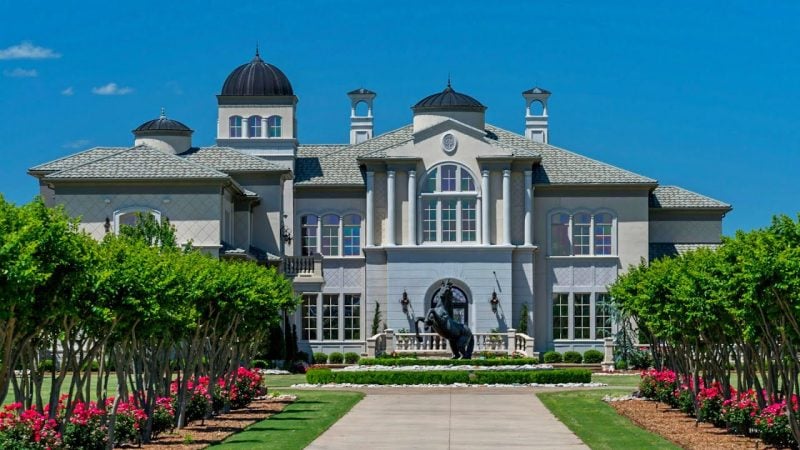The 30 Best Places to Live in Louisiana: Top Cities and Towns
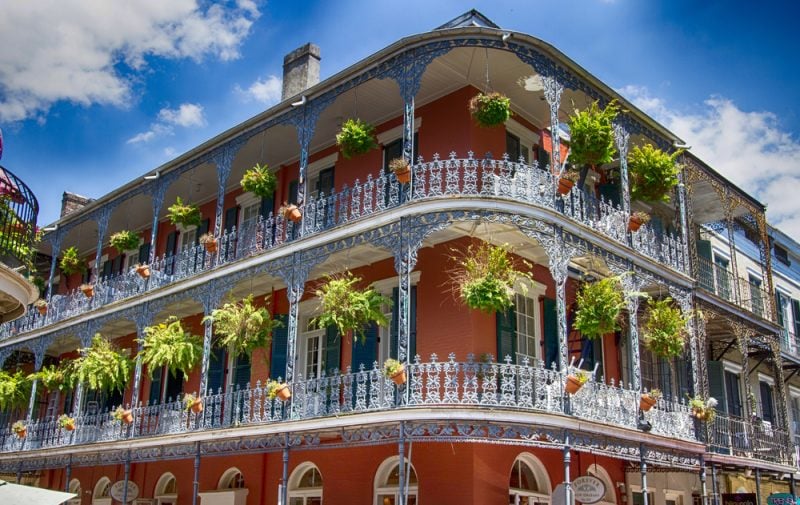
Louisiana offers residents a unique blend of cultural richness, economic opportunity, and distinctive Southern charm across its diverse cities and towns.
From bustling metropolitan areas with thriving job markets to smaller communities known for their tight-knit atmospheres, the Pelican State provides options for various lifestyles and preferences.
This comprehensive guide examines thirty Louisiana communities based on factors including cost of living, employment opportunities, educational quality, safety, and local amenities to help identify the most livable places in the state.
The analysis covers major cities like New Orleans and Baton Rouge alongside smaller towns such as Zachary and Mandeville, providing insights into what makes each location attractive to residents.
Whether seeking urban excitement or small-town tranquility, Louisiana’s communities offer distinct advantages shaped by the state’s rich cultural heritage and growing economic landscape.
Here are the 30 best places to live in Louisiana:
30. Denham Springs
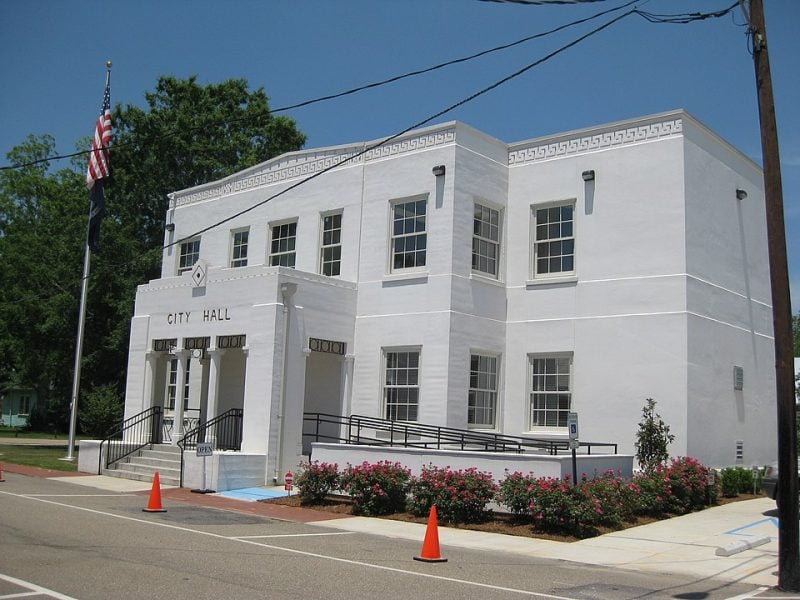
Denham Springs offers residents small-town charm with convenient access to Baton Rouge. The city maintains an affordable cost of living that attracts families and individuals seeking value.
The community has a population of approximately 9,900 residents. The poverty rate sits at 6.3%, which is notably lower than the national average.
Typical households earn around $67,921 annually, slightly above the national median income. Home prices remain reasonable compared to similar-sized cities across the region.
The city features a humid subtropical climate with hot summers and mild winters. Residents enjoy year-round outdoor activities and recreational opportunities.
Denham Springs ranks as the 30th most diverse place to live in Louisiana. The community offers various parks, lakefront areas, and maintains a vibrant downtown district with modern amenities.
29. Bogalusa
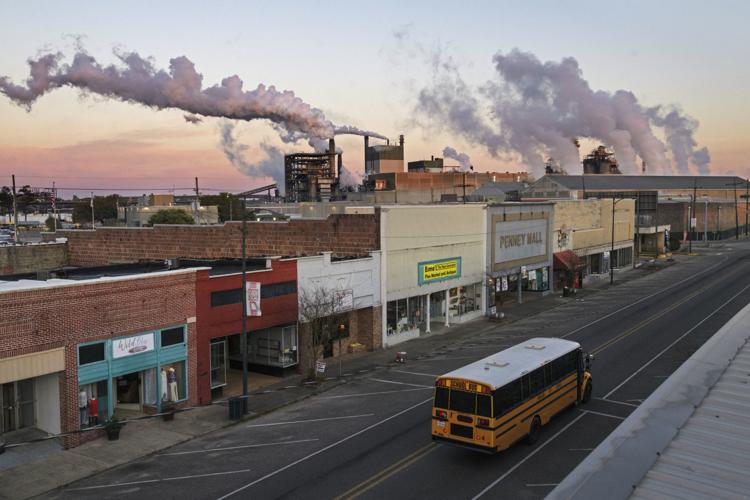
Bogalusa ranks as one of Louisiana’s most affordable places to live. The city of 11,658 residents offers low housing costs and living expenses.
The median household income is $31,619, significantly below the national average of $67,500. The poverty rate stands at 29.1%, which is 108% higher than the national rate.
Bogalusa receives a livability score of 60 out of 100. The city ranks in the 42nd percentile among all American cities for overall quality of life.
The area ranks 45th out of 296 Louisiana places for lowest cost of living. It also places 55th out of 298 for diversity among Louisiana communities.
Residents benefit from affordable housing and low everyday expenses. The city provides basic amenities and services for families seeking budget-friendly living options in Louisiana.
28. Natchitoches
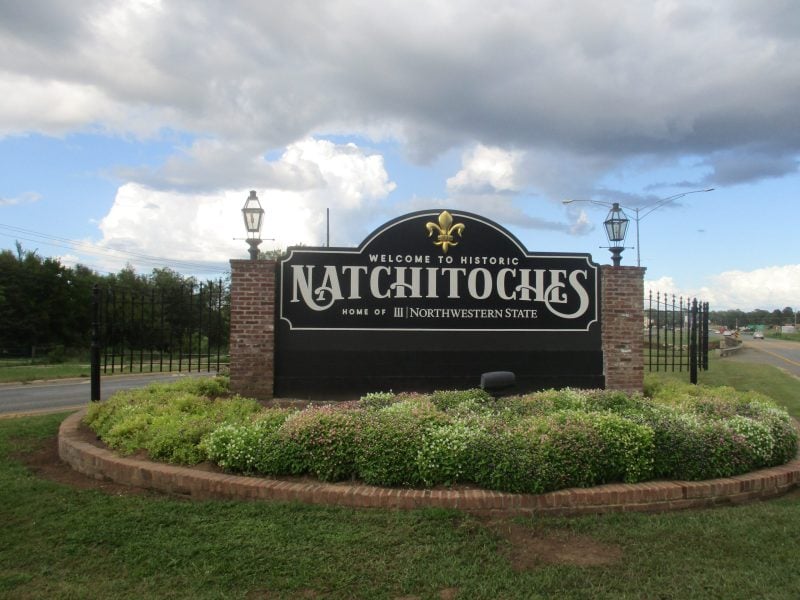
Natchitoches sits in northwestern Louisiana near the Texas border. The city serves as both the parish seat and largest municipality in Natchitoches Parish.
This historic community has a population of approximately 17,711 residents. The area covers 808 square miles within the parish boundaries.
The local job market shows promise with unemployment rates below average. Wages in the metro area run about 6% higher than national figures.
Housing costs vary significantly across different neighborhoods. Market values reflect the quality differences between various residential areas.
The city faces economic challenges with a poverty rate of 40.4%. Median household income sits at $23,967, well below the national median of $67,500.
Natchitoches offers a mix of amenities and cultural attractions. The area provides options for those seeking small-town living in Louisiana.
27. Carencro

Carencro is a small city in Lafayette Parish with a population of 9,411 residents. The city ranks #3 in Louisiana for its cost of living index rating of 94, making it an affordable place to live.
The city receives a livability score of 66 out of 100 from AreaVibes. It ranks #97 in Louisiana and #10,115 nationwide based on factors like amenities, education, and employment opportunities.
Carencro offers easy access to surrounding areas and features diverse neighborhoods. The city appeals to families and individuals from various backgrounds seeking housing options.
Housing quality varies significantly throughout different neighborhoods in Carencro. The best areas are typically determined by median home values and market demand from potential residents.
The city provides residents with proximity to Lafayette Parish amenities while maintaining a smaller community atmosphere. Local data shows reasonable crime rates compared to other Louisiana cities of similar size.
26. Broussard
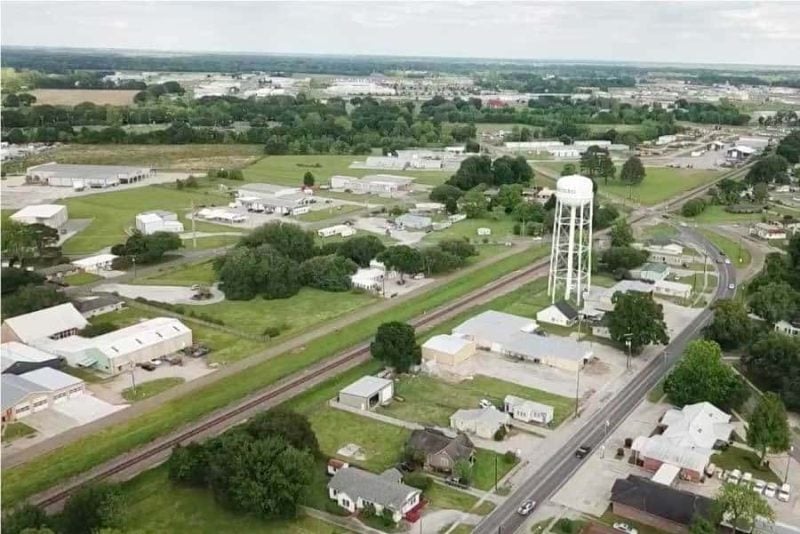
Broussard is a suburb of Lafayette with a population of approximately 13,791 residents. The city sits in Lafayette Parish and offers residents a rural feel with easy access to urban amenities.
Most residents in Broussard own their homes rather than rent. The typical household earns $76,515 annually, which exceeds the national median income of $67,500.
The city ranks among Louisiana’s top 10 for housing affordability and job growth rate. Broussard also receives high marks for healthcare quality and favorable weather conditions.
Home prices in Broussard exceed Louisiana’s state average of $194,522. The city maintains numerous parks and recreational spaces for residents to enjoy.
Broussard combines southern hospitality with convenient interstate access, shopping, and entertainment options. The community features diverse neighborhoods that blend charm with modern accessibility.
25. Abbeville
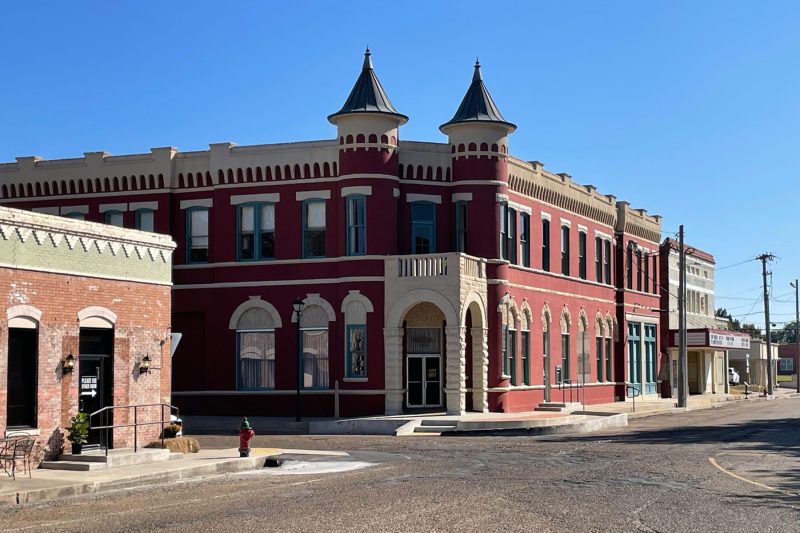
Abbeville sits 20 miles south of Lafayette in Vermilion Parish. This small city serves as the parish seat with a population of approximately 12,000 residents.
The community maintains one of Louisiana’s lowest crime rates. Strong community ties and dedicated local law enforcement contribute to public safety.
Abbeville experiences warm summers and mild winters. The comfortable year-round temperatures make outdoor activities accessible throughout most seasons.
The area offers cultural attractions including Lake Fausse Pointe State Park and Vermilionville Living History Museum. Residents can visit the weekly farmers market or attend the annual Jazz on the Teche festival.
The median household income is $34,555, significantly below the national average. The poverty rate stands at 29.1%, which exceeds national figures.
Housing costs vary considerably across different neighborhoods. The quality of residential areas differs greatly throughout the city, affecting property values and living conditions.
24. DeRidder

DeRidder sits in Beauregard Parish with approximately 10,000 residents. The city originated as a logging camp in the late 1890s before transforming into an industrial center.
The local economy relies heavily on manufacturing and natural resources. Timber and mineral resources drive much of the area’s industrial activity. Manufacturing facilities produce recreational vehicles and agricultural products.
DeRidder ranks 15th out of 298 places for diversity in Louisiana. It also places 18th out of 219 for retirement destinations in the state.
Housing quality varies significantly across different neighborhoods within the city. The best areas correlate with higher median home values and lower crime rates.
The city benefits from its industrial base while maintaining a small-town atmosphere. DeRidder offers residents access to natural resources and manufacturing employment opportunities in rural southwestern Louisiana.
23. Sulphur
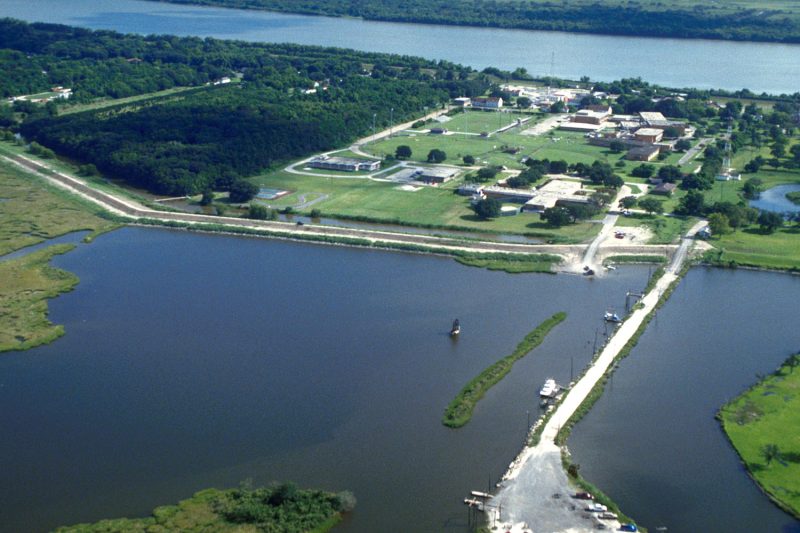
Sulphur sits southeast of Lake Charles with a population of approximately 20,122 residents. The city earned a livability score of 70 out of 100, ranking it among Louisiana’s better places to live.
The median household income in Sulphur reaches $54,537 annually. This falls below the national median of $67,500 but remains competitive within Louisiana.
The city’s poverty rate stands at 15%, which is 7% higher than the national average. Despite this economic challenge, Sulphur offers quality neighborhoods with varying home values.
Residents enjoy access to natural attractions like Houma National Wildlife Refuge and Cypress Cove. These locations provide opportunities for outdoor recreation and wildlife observation.
The annual Contraband Days festival celebrates local culture through music and art. This event brings the community together and showcases regional traditions that define Southwest Louisiana’s character.
22. Opelousas
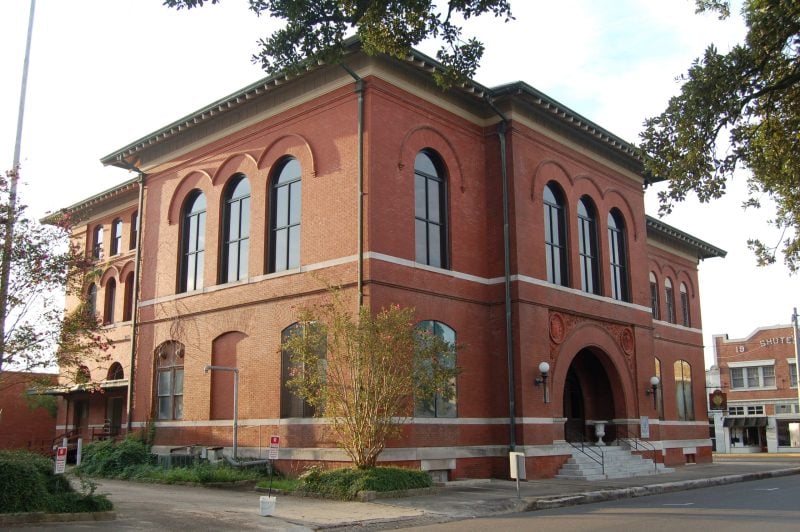
Opelousas sits in St. Landry Parish in south-central Louisiana. The city has a population of approximately 16,687 residents.
The area offers a low cost of living compared to many other Louisiana cities. This makes it attractive for families and individuals seeking affordable housing options.
Opelousas has a rich cultural heritage centered around music and food. The city maintains strong traditions that reflect Louisiana’s diverse cultural landscape.
The local economy provides various job opportunities across different sectors. Employment options range from traditional industries to emerging business ventures.
The city ranks well for its amenities and services. Residents have access to essential facilities and recreational opportunities within the community.
Housing quality varies significantly across different neighborhoods in Opelousas. Some areas feature higher property values and better living conditions than others.
The demographic makeup is diverse, with the majority of residents being African American followed by white residents.
21. Prairieville
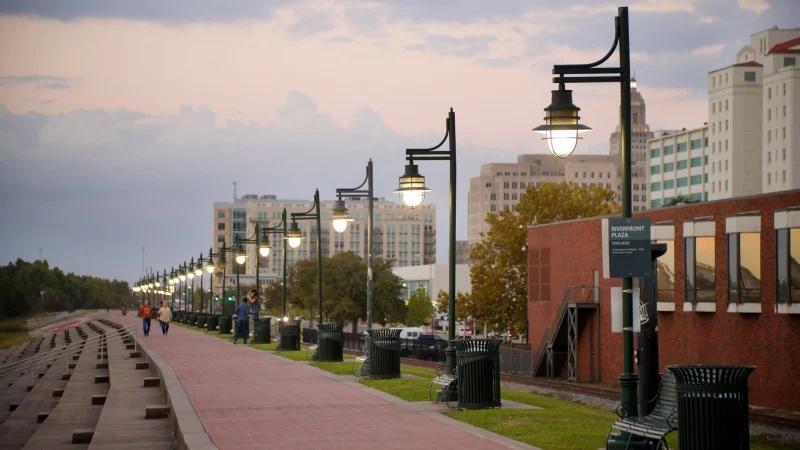
Prairieville stands out as one of Louisiana’s most desirable suburban communities. Located just 20 miles from Baton Rouge, this growing area offers an ideal blend of modern amenities and natural beauty.
The community features newly constructed suburban neighborhoods alongside the scenic 18-mile Bayou Manchac. This waterway historically connected the region to New Orleans through merchant trade routes.
Prairieville boasts strong employment opportunities and exceptional school systems. The area maintains low crime rates, contributing to its family-friendly reputation.
Housing options range from contemporary cul-de-sac developments to properties near marshlands. The neighborhood quality varies significantly across different areas, with home values reflecting these differences.
Money magazine has recognized Prairieville among its Best Places to Live rankings. The recognition stems from its combination of safety, educational excellence, and economic growth potential.
20. West Monroe
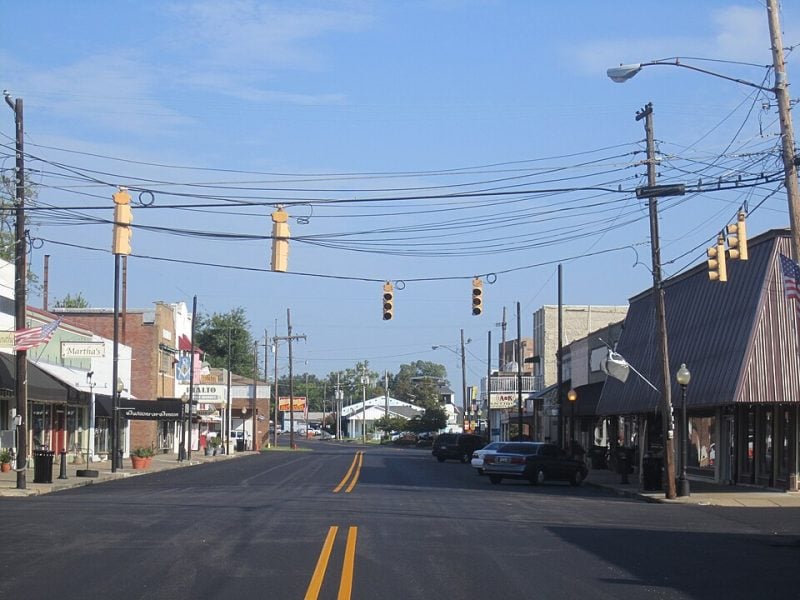
West Monroe ranks as the second best place to live in Ouachita Parish and fifteenth in Louisiana. The city maintains a livability score of 77 out of 100, placing it in the top 30% of American cities.
Located in Ouachita Parish, West Monroe offers residents access to local shopping centers and diverse dining options. The city features numerous parks that provide opportunities for outdoor activities and recreation.
Neighborhoods within West Monroe vary considerably in quality and home values. The most desirable areas typically feature lower crime rates and higher quality of life standards.
The city attracts residents seeking a balance of urban amenities and community atmosphere. West Monroe’s location provides convenient access to regional attractions while maintaining its distinct character as a mid-sized Louisiana city.
19. Crowley
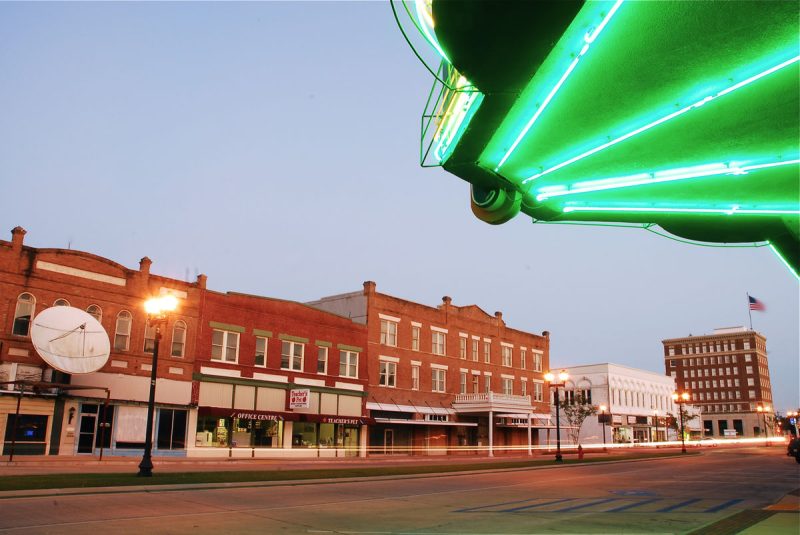
Crowley sits in south-central Louisiana, approximately 130 miles west of New Orleans. The city serves as part of the Lafayette Metro Area in Acadia County.
The community offers an affordable cost of living compared to many other Louisiana cities. This affordability makes it attractive for residents seeking budget-friendly housing options.
Crowley maintains a small-city atmosphere with a population of around 12,689 residents. The area provides access to local amenities while maintaining a quieter pace of life.
The city’s location provides convenient access to larger metropolitan areas when needed. Residents can enjoy small-town living while remaining connected to regional opportunities.
Crowley offers customizable living options for those seeking a more rural Louisiana experience. The community appeals to individuals prioritizing affordability and a slower-paced lifestyle in the Pelican State.
18. Gonzales
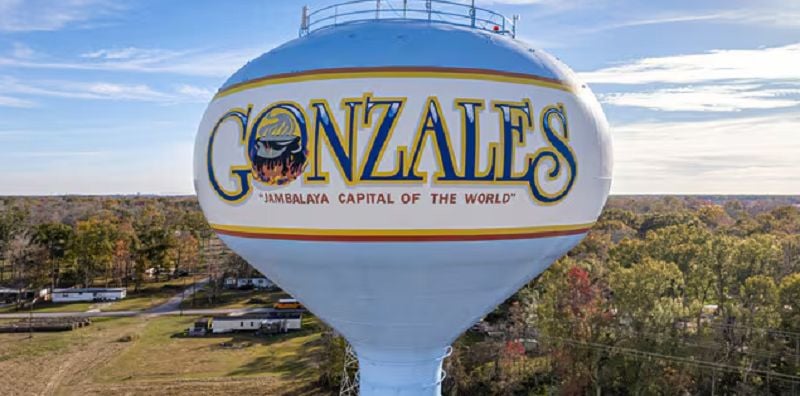
Gonzales sits strategically between Baton Rouge and New Orleans, offering residents access to major cities while maintaining small-town charm. The city is known as the “Jambalaya Capital of the World” and provides a blend of modern amenities with traditional Louisiana culture.
The community features oak-lined streets and scenic bayous that showcase the region’s natural beauty. Annual events include the Ascension Hot Air Balloon Festival and Gonzales Spring Fest, which bring residents together throughout the year.
Housing options vary significantly across different neighborhoods within the city. The area offers good schools and family-friendly environments that attract those seeking a peaceful place to raise children.
Local venues provide live music and nightlife options that reflect Louisiana’s musical heritage. The city maintains a welcoming atmosphere for families and retirees alike.
17. Covington
Covington sits in St. Tammany Parish as a suburb of New Orleans with a population of 11,568. The city offers residents a sparse suburban feel where most people own their homes.
This community attracts many families and young professionals. The typical household earns $76,399 annually, which exceeds the national median of $67,500.
Covington maintains a poverty rate of 10.4%, which is 26% lower than the national average. The city provides affordable housing options alongside several top-rated public schools.
The area serves as a golf destination with courses like Beau Chene Golf and Country Club nearby. Life moves at a slower pace compared to New Orleans and other larger Louisiana cities.
Covington experienced population growth following Hurricane Katrina as displaced New Orleans residents relocated to the area.
16. Mandeville
Mandeville stands out as one of Louisiana’s premier suburban communities. This St. Tammany Parish city offers residents a population of approximately 12,931 people.
The city provides excellent educational opportunities through top-rated public and private schools. Families frequently choose Mandeville for its strong school system, with an average rating of 8.
Safety remains a key advantage in Mandeville. The city maintains a crime index of 75, which falls below both metro and national averages.
Housing options appeal to many residents, with most people owning their homes. The median home value reaches $331,800, reflecting the area’s desirability.
Mandeville creates a dense suburban atmosphere with numerous amenities. Residents enjoy access to restaurants, coffee shops, and parks throughout the community.
The city’s location provides convenient access to New Orleans while maintaining its distinct suburban character. Beautiful landscapes and a strong sense of community define daily life in Mandeville.
15. Zachary
Zachary stands out as an incorporated city in East Baton Rouge Parish that consistently earns recognition for its quality of life. Family Circle magazine selected Zachary as one of the top ten best places to live in the United States.
The city offers multiple parks perfect for picnics and sports activities. BREC’s Zachary Community Park provides outdoor recreation opportunities with scenic views for residents and visitors.
Zachary’s neighborhoods vary in quality and home values across different areas. The most desirable neighborhoods tend to have lower crime rates and attract families seeking a safe community environment.
Housing options range from affordable to premium, creating diversity in residential choices. The local real estate market reflects strong demand from people who want to live in this well-regarded city.
Zachary provides access to quality public schools and maintains reasonable cost of living compared to other Louisiana cities.
14. Ruston
Ruston serves as the parish seat of Lincoln Parish with a population of approximately 22,000 residents. The city has earned recognition as one of the best places to live in the United States.
The community offers a dense suburban environment where most residents rent their homes. Young professionals make up a significant portion of the population, attracted by the city’s educational opportunities.
Ruston hosts several universities, creating a vibrant academic atmosphere. This educational presence contributes to the city’s cultural scene and diverse population.
The public schools in Ruston receive high ratings, making it appealing to families. The city provides abundant parks and recreational facilities for residents of all ages.
Cost of living runs 16.7% lower than the national average. However, the median household income of $32,295 falls below the national median of $67,500, with a poverty rate of 38.8%.
13. Slidell
Slidell stands as a suburb of New Orleans with a population of 28,664 residents. The city sits in St. Tammany Parish and ranks among Louisiana’s top living destinations.
Residents enjoy a sparse suburban atmosphere where most people own their homes. The community offers numerous parks for outdoor activities and recreation.
Slidell maintains a livability score of 75 according to rankings data. The city has earned recognition as one of the fastest growing areas in Louisiana despite its modest size.
The neighborhoods vary significantly in quality and home values throughout the city. Market demand drives the most desirable areas, which typically feature lower crime rates and better amenities.
Housing options cater to different preferences and budgets across various districts. The city provides convenient access to both urban amenities and suburban comfort for its residents.
12. Central
Central sits in East Baton Rouge Parish as a rapidly growing city that attracts families and professionals. The community incorporated in 2005 and has maintained steady population growth since then.
The city offers excellent public schools through the Central Community School System. These schools consistently receive high ratings and draw families seeking quality education for their children.
Housing costs remain reasonable compared to other Louisiana cities. Most residents live in single-family homes with well-maintained neighborhoods and suburban amenities.
Central provides easy access to Baton Rouge employment opportunities while maintaining a smaller city atmosphere. The location offers convenient shopping centers and recreational facilities for residents.
The city maintains low crime rates and active community involvement. Local government focuses on maintaining infrastructure and supporting family-friendly activities throughout the year.
11. Houma
Houma sits 55 miles southwest of New Orleans in Terrebonne Parish. The city has a population of approximately 33,000 residents and offers a sparse suburban feel.
Most residents own their homes in this bayou community. Families make up a significant portion of the population, creating a family-friendly environment.
The public schools in Houma receive high ratings from residents and educational assessments. The city ranks 49th out of 218 places for best public schools in Louisiana.
Housing costs remain affordable with a cost-to-income ratio of 1.95%. The overall cost of living index sits at 87.1, below the national average.
Houma’s location provides access to unique bayou culture and outdoor activities. The city serves as a gateway to Louisiana’s coastal wetlands and fishing opportunities.
Crime rates vary between violent and non-violent offenses, with a violent crime index of 29.2.
10. Alexandria
Alexandria sits in central Louisiana and combines Southern charm with modern conveniences. The city ranks highly for affordability, placing third in cost of living among 883 evaluated cities.
Residents enjoy abundant shopping, dining, and entertainment options throughout the area. The downtown district offers a vibrant commercial scene with easy access to restaurants and shops.
Housing remains affordable with average home prices ranging from $160,000 to $280,000. This pricing makes homeownership accessible for many families and young professionals.
The city provides a diverse community atmosphere with mixed-use developments. Alexandria offers residents both urban energy and small-town comfort.
Access to amenities and attractions contributes to the city’s strong livability ratings. The location provides convenient access to other parts of Louisiana while maintaining its own distinct character.
9. Monroe
Monroe sits in northeastern Louisiana as the state’s eighth-largest city. The city offers diverse neighborhoods that cater to different lifestyle preferences.
The Garden District features historic homes with tree-lined streets that showcase the area’s architectural heritage. Forsythe appeals to residents seeking upscale housing near the Ouachita River.
Lakeshore provides waterfront properties along Bayou DeSiard. North Monroe delivers suburban living for families wanting more space.
Monroe ranks 115th out of 298 places for diversity in Louisiana. The city places 126th out of 218 for public school quality statewide.
Housing values vary significantly across different neighborhoods within the city. The northeastern location provides access to natural areas including swamps and waterways.
Downtown Monroe contains local shops, restaurants, and music venues. The city experiences hot summers with August temperatures averaging 93 degrees Fahrenheit.
8. Bossier City
Bossier City ranks as Money magazine’s best place to live in Louisiana for two consecutive years. The city offers residents an attractive combination of affordability and quality amenities.
Located across the Red River from Shreveport, Bossier City provides easy access to both urban conveniences and recreational opportunities. The area features strong job growth and diverse employment options.
Greenacres Place stands out as a family-oriented suburb with excellent schools and parks. Stockwell Place offers upscale living with newer homes and modern community amenities.
North Bossier represents the city’s rapid growth with contemporary developments and comprehensive shopping centers. The area attracts both young professionals and growing families.
Housing costs remain reasonable compared to national averages while maintaining good neighborhood quality. Crime rates stay relatively low across most residential areas, contributing to the city’s appeal for families and retirees.
7. Kenner
Kenner stands as Louisiana’s fifth-largest city with a population of approximately 67,662 residents. The city sits just outside New Orleans, offering residents suburban comfort with convenient city access.
This diverse community consists of 43% Caucasian, 34% African American, and 14% Hispanic residents. The ethnic diversity creates a rich cultural environment throughout the area.
The typical household earns $54,493 annually, which falls below the national median of $67,500. However, the lower cost of living helps offset this income difference.
Kenner ranks #61 in national livability rankings based on quality of life factors. The city’s proximity to New Orleans provides access to major attractions while maintaining a more relaxed pace.
The poverty rate reaches 17.5%, which is 25% higher than the national average. Despite economic challenges, many residents appreciate the community’s location and cultural offerings.
6. Lake Charles
Lake Charles offers residents a blend of urban amenities and natural beauty in southwest Louisiana. The city sits 30 miles from the Texas border and serves as a regional hub for industry and culture.
Prien Lake stands out as an upscale neighborhood featuring lakefront properties with scenic water views. Shell Beach Drive attracts homebuyers seeking historic charm along the lake’s edge.
Graywood provides modern living in a planned community centered around a golf course. Oak Park offers an established neighborhood atmosphere with strong community connections.
Downtown Lake Charles appeals to residents wanting urban conveniences amid ongoing development projects. The area provides walkable access to restaurants, entertainment venues, and cultural attractions.
The city ranks among Louisiana’s most diverse places to live. Housing options range significantly across neighborhoods, allowing residents to find properties matching various budgets and preferences.
Lake Charles combines small-city charm with industrial opportunities, making it suitable for families and professionals alike.
5. Metairie
Metairie stands as one of Louisiana’s premier places to live, located less than 10 miles from New Orleans. This suburban community in Jefferson Parish offers residents an ideal blend of urban amenities and residential comfort.
The city boasts a population of approximately 139,000 people. Most residents own their homes, contributing to neighborhood stability and community investment.
Metairie provides excellent access to dining, entertainment, and cultural activities. The area features numerous restaurants, bars, coffee shops, and parks that enhance quality of life.
Living costs remain reasonable compared to many metropolitan areas. While housing prices sit above national averages, utilities cost roughly 20% less than typical American cities.
The community maintains strong family-friendly characteristics. Quality schools, safe neighborhoods, and recreational facilities make it particularly attractive to families with children.
Metairie’s proximity to New Orleans provides additional employment opportunities and entertainment options while maintaining a more relaxed suburban atmosphere.
4. Shreveport
Shreveport ranks as the 8th best place to live in Louisiana according to U.S. News rankings. The city sits in northwest Louisiana and offers a blend of Southern charm with modern amenities.
The downtown district features historical attractions and live music venues. Residents enjoy diverse restaurants, shops, and entertainment options throughout the area.
Caddo Heights and South Highlands stand out as top neighborhoods for homebuyers. These areas sit just 10 minutes south of downtown and offer quality residential options.
Housing costs vary significantly across different neighborhoods in Shreveport. The city provides living options for various budgets and lifestyle preferences.
Shreveport’s location makes it convenient for travel to other major cities. The city serves as a midpoint between Dallas, Texas, and Baton Rouge, Louisiana.
3. Lafayette
Lafayette stands out as one of Louisiana’s most livable cities, earning recognition as a top destination for families in 2024. The city combines rich Cajun culture with modern amenities.
Known as the “Hub City,” Lafayette offers exceptional food, music, and community connections. Residents enjoy access to vibrant festivals and authentic Creole cuisine throughout the year.
The city provides strong public schools and diverse neighborhoods suitable for different lifestyles. Housing costs remain reasonable compared to other major Louisiana cities.
Lafayette’s central location offers convenient access to both Baton Rouge and New Orleans. The area features good healthcare facilities and growing job opportunities.
Traffic congestion can be frustrating during peak hours. However, most residents find the cultural benefits and community atmosphere outweigh transportation challenges.
2. Baton Rouge
Baton Rouge serves as Louisiana’s capital city and ranks as one of the state’s most desirable places to live. The city sits approximately 30 miles up the Mississippi River from New Orleans.
Home to Louisiana State University and Southern University, Baton Rouge maintains a vibrant college town atmosphere. The presence of these major universities contributes to the area’s cultural richness and economic stability.
The city offers diverse neighborhoods that cater to different lifestyles and budgets. Residents can choose from quiet family-friendly areas to more urban settings with easy access to downtown amenities.
Baton Rouge’s economy benefits from its role as the state capital, creating numerous government jobs and supporting businesses. The city also serves as a hub for petrochemical industries and healthcare.
Southern hospitality defines the local culture, with residents enjoying the area’s famous food scene and music heritage. The climate allows for year-round outdoor activities along the Mississippi River.
1. New Orleans

New Orleans stands as Louisiana’s most iconic city, offering a unique blend of culture, history, and urban amenities. The city features diverse neighborhoods that cater to different lifestyles and budgets.
The French Quarter remains the historic heart of the city. Its centuries-old architecture and vibrant atmosphere attract residents who want to live in the center of New Orleans’ cultural scene.
Uptown and the Garden District represent some of the city’s most desirable areas. These neighborhoods feature historic mansions, tree-lined streets, and proximity to Tulane and Loyola universities.
The Marigny and Bywater areas have emerged as trendy neighborhoods. They offer more affordable housing options while maintaining the city’s distinctive character and charm.
New Orleans provides year-round festivals, renowned cuisine, and a thriving arts scene. The city’s public transportation system and walkable neighborhoods make daily life convenient for many residents.
What Makes a City Desirable in Louisiana?
Louisiana cities attract residents through their unique blend of cultural richness, affordable living costs, and growing economic opportunities. The state’s subtropical climate, diverse employment sectors, and strong educational institutions create appealing environments for families and professionals.
Community Culture
Louisiana’s community culture centers around music, food, and festivals that bring neighborhoods together. Cities like New Orleans showcase jazz heritage and Mardi Gras celebrations that create year-round community engagement.
The state’s cultural identity blends French, Spanish, and African influences. This creates distinct regional personalities from the Ark-La-Tex region to the bayou communities.
Live music venues and local restaurants serve as community gathering spaces. Many Louisiana cities host regular festivals celebrating everything from crawfish to jazz music.
Sports teams provide additional community bonds. Cities with proximity to professional teams or strong high school athletics often see higher resident satisfaction and community pride.
The laid-back lifestyle characteristic of Louisiana communities appeals to those seeking slower-paced living. This atmosphere encourages neighbor interactions and community involvement.
Cost of Living Factors
Louisiana ranks as the 37th most expensive state, making it more affordable than many regions. Housing costs remain below national averages in most cities outside New Orleans.
Property taxes in Louisiana stay relatively low compared to other states. This factor significantly impacts long-term affordability for homeowners.
Utilities and transportation costs vary by location. Cities with better infrastructure typically offer more predictable monthly expenses for residents.
Healthcare costs influence desirability, particularly for retirees and families. Cities with quality medical facilities often command slightly higher living costs but provide better value.
Food costs remain reasonable due to local agriculture and fishing industries. Louisiana’s abundant seafood and produce keep grocery expenses manageable in most areas.
Education and Employment Opportunities
Technology, logistics, and medical industries drive employment growth in major Louisiana cities. Baton Rouge has been recognized as one of the best places to start a business.
Cities with major universities create diverse employment opportunities. These areas typically offer better job markets and continuing education options for residents.
Public school quality varies significantly between cities and parishes. Areas with strong school systems attract families and maintain higher property values.
Healthcare employment provides stability in many Louisiana communities. Cities with major medical centers offer diverse career opportunities beyond traditional industries.
The energy sector continues providing employment opportunities. Cities near refineries or offshore operations often offer higher-paying jobs but may experience more economic volatility.
Louisiana Lifestyle Highlights
Louisiana offers a unique blend of mild winters, vibrant cultural celebrations, and world-renowned cuisine that shapes daily life across the state. The climate supports year-round outdoor activities while festivals and culinary traditions create a distinctive social atmosphere.
Climate and Outdoor Recreation
Louisiana’s subtropical climate features mild winters and warm, humid summers that enable outdoor activities throughout most of the year. Average winter temperatures rarely drop below freezing in most areas, making it comfortable for residents to enjoy outdoor pursuits.
The state’s extensive waterways provide opportunities for fishing, boating, and water sports. The Mississippi River, numerous bayous, and coastal areas offer diverse aquatic recreation options.
Popular Outdoor Activities:
-
Fishing in bayous and coastal waters
-
Boating on rivers and lakes
-
Hiking in state parks and nature preserves
-
Birdwatching in wetland areas
Weather patterns can change quickly, with conditions shifting from sunny to rainy within the same day. Summer months bring high humidity and frequent afternoon thunderstorms.
The coastal location provides access to beaches and marshlands for nature enthusiasts. State parks throughout Louisiana offer camping, hiking trails, and wildlife viewing opportunities.
Festivals and Culinary Traditions
Louisiana’s festival calendar runs year-round, with Mardi Gras serving as the most internationally recognized celebration. Cities across the state host parades, balls, and street parties during carnival season from January through March.
Jazz music originated in New Orleans and remains central to the state’s cultural identity. Live music venues operate throughout Louisiana, featuring jazz, blues, zydeco, and Cajun music.
Signature Louisiana Dishes:
-
Gumbo — Rich stew with seafood or meat
-
Jambalaya — Rice dish with various proteins
-
Crawfish — Prepared in multiple traditional styles
-
Beignets — Powdered sugar-covered pastries
Local food festivals celebrate regional specialties like crawfish, oysters, and rice. These events occur in communities statewide and attract both residents and visitors.
Creole and Cajun cooking traditions influence restaurant menus and home cooking. Fresh seafood from the Gulf of Mexico and local waterways appears regularly in Louisiana cuisine.




